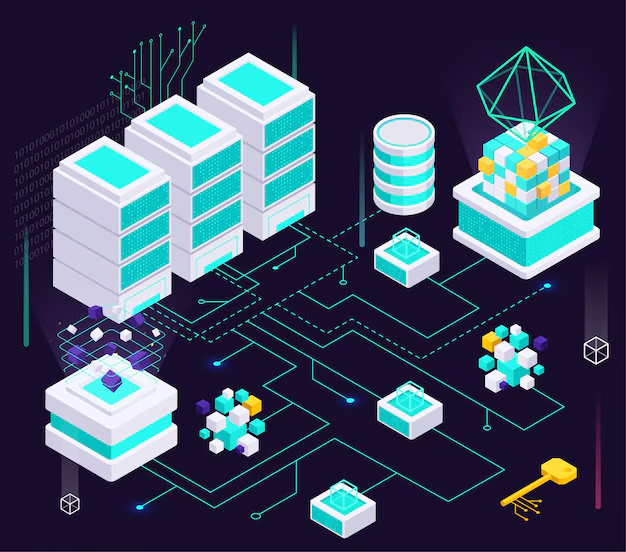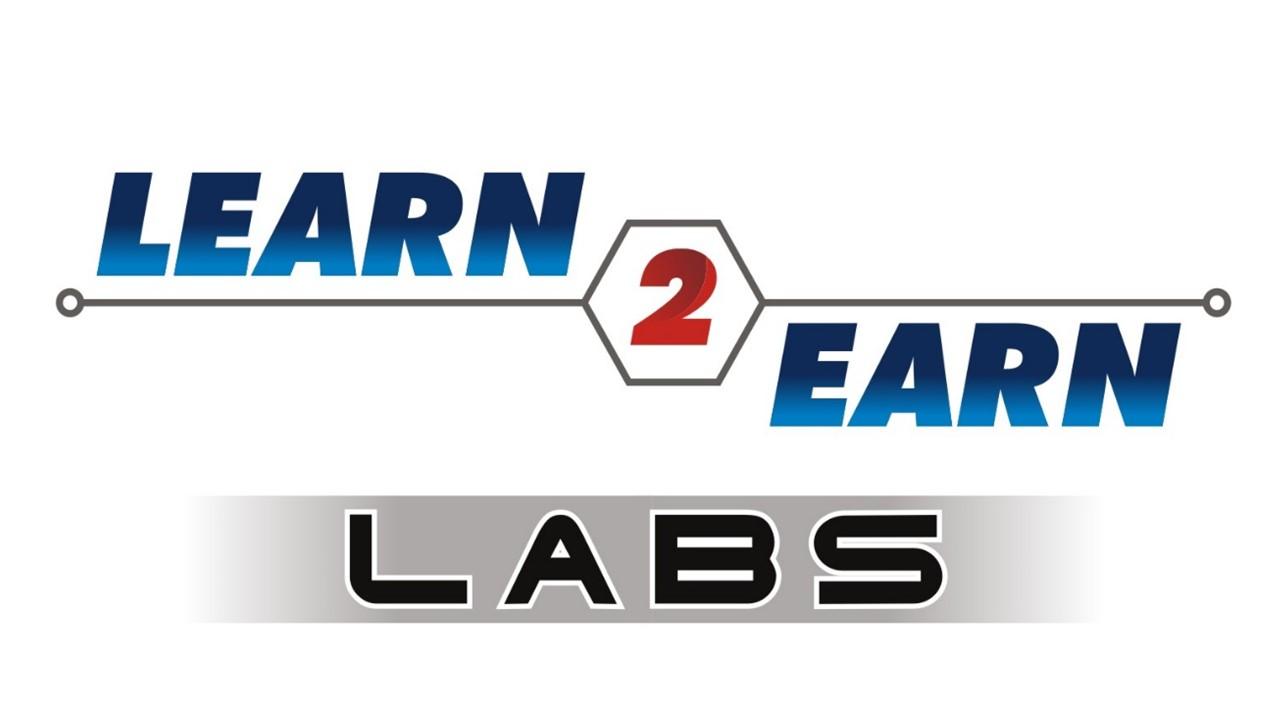
In the fast-paced and competitive world of technology, mastering Data Structures and Algorithms is a game-changer. It not only lays the foundation for efficient problem-solving but also opens the doors to lucrative job opportunities, career advancement, and technical excellence. Our Data Structure Using Java Training Program, designed for a duration of six months, is your gateway to becoming a skilled problem-solver and a sought-after professional in the tech industry.
This program blends the power of Java, a versatile and widely-used programming language, with the in-depth study of data structures and algorithms. From understanding the basics to mastering advanced concepts, you will gain practical knowledge and hands-on experience to solve real-world challenges, design efficient solutions, and excel in competitive programming, technical interviews, and software development roles.
About the Program
Our comprehensive syllabus ensures a perfect balance of theoretical understanding and practical application. Over the course of six months, you will delve deep into the following areas:
This program goes beyond theory, offering a strong focus on practical implementation. Every module includes coding assignments and problem-solving exercises, ensuring that you develop the skills necessary to tackle real-world challenges. By the end of this course, you’ll have a deep understanding of both fundamental and advanced topics, empowering you to confidently build scalable and optimized solutions.

Why Data Structures using Java?
Java is one of the most popular and versatile programming languages, widely used in the industry for building scalable applications. Combining this language with a deep understanding of data structures and algorithms equips you with the skills to:
- Solve technical problems efficiently.
- Write optimized, production-ready code.
- Excel in coding interviews for top companies.
- Build and design software that scales effectively.
- Leverage Java’s extensive libraries, frameworks, and tools to simplify complex data structure implementations.
Java’s robust performance, cross-platform capabilities, and rich API make it the perfect choice for learning and mastering data structures, ensuring you are well-prepared for the demands of the tech industry.
Who Can Join
- Beginners: Learn the fundamentals of programming and data structures step-by-step.
- Graduates and Students: Enhance your employability with in-demand technical skills.
- Professionals: Upskill and advance your career by mastering algorithms and problem-solving.
- Competitive Programmers: Gain an edge in coding competitions with optimized solutions.

What makes this Program Unique?
- Comprehensive Curriculum: The program covers all fundamental and advanced data structures, algorithms, and Java concepts, ensuring you are well-prepared for real-world challenges.
- Practical Learning: Real-world examples, projects, and assignments ensure you gain hands-on experience and confidence in implementing what you learn.
- Job Readiness: The program is tailored to help you crack interviews, competitive exams, and industry challenges with ease.
- Expert Mentorship: Learn from experienced professionals who bring insights from real-world scenarios to help you bridge the gap between theory and practice.
This program is designed to not only teach you concepts but also make you proficient in solving complex problems and applying your skills effectively in any technical role.
Advantages of the Program
- High-Demand Skills: Data structures and algorithms are essential for roles like software engineer, data scientist, and system architect.
- Career Advancement: With expertise in these areas, you’ll be prepared for challenging roles with attractive salary packages.
- Problem-Solving Mastery: Gain confidence in solving complex problems and implementing robust solutions.
- Versatile Applications: Use your knowledge across domains like web development, artificial intelligence, and cloud computing.
- Real-World Experience: Build projects that showcase your technical abilities and make you stand out to employers.
Career Options After Completion
After completing this program, you will be equipped to take on roles such as:
- Software Engineer
- Data Structure Specialist
- Algorithm Developer
- System Architect
- Competitive Programmer
- Back-End Developer
- Technical Consultant
With your in-depth knowledge of data structures and algorithms, you’ll stand out as a top candidate for high-paying jobs in industries like technology, finance, healthcare, and e-commerce. This program not only prepares you for technical interviews but also empowers you to handle real-world challenges, making you a valuable asset in any team or organization.
How Much Dedication is Required?
This program is designed to be intensive and transformative. Your dedication, consistent practice, and willingness to tackle challenges will determine your success. By fully engaging with the lectures, assignments, and projects, you will:
- Develop a strong command of data structures and algorithms.
- Build an impressive portfolio.
- Gain confidence to handle real-world technical challenges.
Success in this program requires a growth mindset, perseverance, regular practice, and active participation. By embracing challenges, staying consistent, and engaging fully in lectures, assignments, and projects, you will build the skills and confidence needed to achieve your goals.

Future Scope
The demand for professionals with a strong grasp of Data Structures and Algorithms is evergreen, making this expertise one of the most valuable assets in the tech industry. Whether you’re solving complex real-world problems, optimizing existing systems, or designing scalable software, the knowledge gained from this program will empower you to excel.
As technology continues to evolve, companies across industries like AI, machine learning, cloud computing, e-commerce, etc. are actively seeking candidates with these critical skills. Proficiency in data structures not only makes you stand out in the job market but also positions you for roles that involve Innovation & System Design.
By completing this program, you’ll not only be prepared for the current demands of the tech industry but will also have the foundational knowledge to adapt and grow as new technologies emerge.
Practical Experience to Boost Your Career
Through this program, you will gain your practical experience by actively participating in assignments, projects, and challenges. This hands-on experience will:
- Enhance your resume and technical portfolio.
- Boost your confidence in handling complex technical tasks.
- Increase your chances of securing higher-paying jobs and leadership roles.
Transform Your Career Today
This six-month training program is more than just a course; it’s a journey toward mastering the art of problem-solving with Data Structures and Java. By the end of this program, you will:
- Be proficient in solving complex data structure problems.
- Have a clear understanding of algorithms and their real-world applications.
- Be ready to tackle competitive coding challenges and excel in interviews.
Take the first step toward building your career as a problem-solving expert and technical innovator. Join us today and unleash your potential to create, innovate, and lead in the tech industry.
Your Journey to Success Starts Here!
With our Data Structure Using Java Training Program, you have the tools, guidance, and opportunities to achieve your dreams. Are you ready to transform your future? Let’s get started!
Training Mode
Online Live Classes are also available
- 4x more effective way of learning
- Hands-on experience with projects & assignments
- Virtual class with real interaction with trainer
- Monitoring support & troubleshooting issues
- Masterclass from industry experts & leaders
- Live class recordings for revision purposes
Data Structure using Java Training in Agra
Learn2Earn Labs
F-4, First Floor, Anna Ikon Complex, In Front of Deviram Food Circle, Sikandra-Bodla Road, Sikandra, Agra, Uttar Pradesh – 282007
Call: +91-9548868337
Program Details
Feel free to call
Request More Information
During the Data Structures Using Java training program, you will explore the following course modules and topics designed to build a strong foundation in programming concepts and practical problem-solving skills.
Importance of Data Structures, Why data structures are crucial for efficient problem-solving, Real-world applications of data structures; Types of Data Structures – Linear (Arrays, Linked Lists, Stacks, Queues), Non-linear (Trees, Graphs, Heaps); Algorithm Basics - What is an algorithm?, Importance of designing efficient algorithms, Steps in problem-solving with algorithms; Setting Up the Java Environment, Java IDEs (IntelliJ IDEA, Eclipse, VS Code), Java Syntax and Concepts, Variables and Data Types, Operators and Expressions, Input/Output Operations (Using Scanner and System.out), Control Flow - Conditional Statements, Loops (While, Do-While, For, Enhanced For); Functions and Methods, Method structure: Return types, parameters, Access modifiers and their scope; Pass-by-Value in Java, How Java handles parameter passing, Examples to demonstrate pass-by-value behavior; Recursive Methods - Basics of recursion: Definition and benefits, Common recursive problems (e.g., factorial, Fibonacci); Exception Handling Basics, Using Try-Catch Blocks - Basic structure and usage, Handling multiple exceptions; Finally Block - Importance and use cases of the finally block; Custom Exceptions - Defining custom exception classes, Throwing and handling custom exceptions.
Core OOP Principles – Inheritance (Types: Single, Multilevel, Hierarchical; Using super and method overriding), Polymorphism (Compile-Time Polymorphism: Method Overloading, Runtime Polymorphism: Method Overriding and dynamic method dispatch), Encapsulation (Access Modifiers: Public, Private, Protected, Default; Getter and Setter Methods with examples), Abstraction (Abstract Classes and Interfaces; Multiple inheritance via interfaces); Advanced OOP Features - Nested Classes (Inner, Static Nested, and Anonymous Classes), Anonymous Objects and Lambda Expressions (Functional interfaces and lambda integration with collections), Enums and Annotations (Enum constants, advanced enum methods, and custom annotations); Generics in Java, Generic methods and classes, Usage with Collection Framework; Introduction to Collection Framework, Definition, hierarchy, and advantages, Core Interfaces – Collection, List (Ordered collections (e.g., ArrayList, LinkedList, Vector)), Set (Unique elements (e.g., HashSet, LinkedHashSet, TreeSet)), Queue (FIFO and Deque implementations (e.g., PriorityQueue, ArrayDeque)), Map (Key-value pairs (e.g., HashMap, LinkedHashMap, TreeMap, Hashtable)); Utility Classes – Collections (Sorting, searching, and manipulating collection elements), Arrays (Utility methods for arrays); Iterators (Iterator and ListIterator), Streams API, Filtering, mapping, and reducing operations; Integration with lambda expressions.
Understanding Asymptotic Notations - Big O Notation (O) - Upper bound of algorithm complexity, Big Omega Notation (Ω) - Lower bound of algorithm complexity, Big Theta Notation (Θ) - Tight bound both upper and lower; Common Complexities - O(1): Constant time examples (e.g., accessing array elements), O(n): Linear time examples (e.g., single loop iterations), O(log n): Logarithmic time examples (e.g., binary search), O(n²): Quadratic time examples (e.g., nested loops). Exercises - Analyze the time complexity of Java code snippets (Iterative loops, Recursive methods, Nested loop structures); Measuring Time Complexity in Java - Using System.nanoTime() or System.currentTimeMillis() to measure execution time, Analyze time complexity of search and sort algorithms (e.g., linear search, binary search, bubble sort); Space Complexity, Static vs. Dynamic Memory Allocation, Static Memory: Examples with fixed-size data structures (e.g., arrays), Dynamic Memory: Examples with dynamic data structures (e.g., linked lists); Stack and Heap Memory in Java - Difference between stack and heap memory, Function call stack and local variables, Heap memory for objects and dynamic allocation; Measuring Space Complexity in Java - Estimating memory usage of objects and data structures, Analyzing memory usage for recursive functions; Optimizing Time and Space Complexity - Use of efficient data structures (e.g., HashMap vs. ArrayList), Code refactoring to reduce redundant computations, Tail recursion optimization.
Introduction to Array, Definition and importance of array in data structures, Declaring, initializing, and accessing arrays in Java; Array Operations - Traversal: Iterating through array elements, Insertion: Adding elements at specific positions, Deletion: Removing elements from specific positions, Searching: Locating elements using indexes or values; Multidimensional Arrays - Concept of 2D arrays and their applications (e.g., matrices), Declaring and initializing 2D arrays in Java, Basic operations on matrices (e.g., addition, subtraction); Sorting Algorithms - Bubble Sort, Selection Sort, Insertion Sort, Merge Sort, Quick Sort, Searching Algorithms - Linear Search: Iterative approach for unsorted arrays, Binary Search: Optimized searching for sorted arrays; Introduction to Strings, String Class: Creating and manipulating strings, StringBuilder and StringBuffer: Differences between the two, Efficient string manipulation using mutable classes; Common String Operations - Extracting substrings, Reversing strings, Comparing strings (equality, lexicographical order), Concatenation and splitting strings; Pattern Matching Algorithms - Brute Force Algorithm, Knuth-Morris-Pratt (KMP) Algorithm, Simplified explanation of prefix-suffix matching, Practical implementation in Java.
Introduction to Linked List - Concept of dynamic data structures and the need for linked list, Types of linked lists: Singly Linked List, Doubly Linked List, Circular Linked List, Operations on Linked List - Insertion: Adding nodes at the beginning, end, and specific positions, Deletion: Removing nodes from the beginning, end, and specific positions, Search: Finding elements by value or position, Traversal: Iterating through linked list elements; 1.3 Applications of Linked Lists (Implementation of dynamic memory allocation, Use in polynomial arithmetic, Simulation of real-world scenarios like train scheduling); Introduction to Stack - Definition and LIFO (Last In First Out) principle, Stack representation using arrays and linked lists; Operations on Stack – Push Adding elements to the stack, Pop: Removing elements from the stack, Peek/Top: Accessing the top element of the stack; Balancing Parentheses: Checking valid combinations of brackets, Infix to Postfix Conversion, Steps and algorithm with examples; Using stacks for postfix expression evaluation; Introduction to Queues, FIFO (First In First Out) principle, Queue representation using arrays and linked lists; Types of Queues - Simple Queue, Circular Queue, Deque (Double-Ended Queue), Priority Queue, Applications of Queues (Process scheduling in operating systems., Handling requests in web servers, Data streaming and buffering).
Introduction to Tree, characteristics of tree, Terminology: Node, root, leaf, height, depth, level, siblings, degree; Types of trees: General trees, binary trees, binary search trees, balanced trees; Binary Tree - Structure and properties of binary trees, Traversals - In-order Traversal (Left-Root-Right), Pre-order Traversal (Root-Left-Right), Post-order Traversal (Left-Right-Root), Level-order Traversal (BFS-based level-wise traversal); Binary Search Trees (BST) - Insertion, deletion, and search operations; Applications: Database indexing, dynamic sets; Balanced Trees - AVL Trees (Definition and rotations (left, right, left-right, right-left), Insertion and balancing examples), Red-Black Trees (Properties and color rules, Insertion and rebalancing techniques); Introduction to Heap, Applications of heap, Difference between min-heap and max-heap; Heap Operations - Insertion: Maintaining the heap property, Deletion: Removing the root and rebalancing the heap; Heap Sort - Concept of sorting using heaps, Implementation steps: Build heap, extract elements, and adjust heap; Introduction to Graphs, Representation of Graphs - Adjacency Matrix (2D array representation, Advantages and disadvantages); Adjacency List (Linked list representation, Space-efficient for sparse graphs); Graph Traversal Algorithms - Breadth-First Search (BFS) - Level-order exploration of nodes, Implementation using queue, Depth-First Search (DFS) - Recursive and iterative implementations, Applications: Cycle detection, connected components; Shortest Path Algorithms - Dijkstra’s Algorithm (Single-source shortest path, Use of priority queues for optimization), Floyd-Warshall Algorithm (All-pairs shortest path algorithm, Dynamic programming approach).
Introduction to Hashing, Importance of hashing in data structures, Use cases: Fast data retrieval, indexing, and caches; Hash Tables : Concept and working of hash functions, Implementation in Java using arrays; Hash Maps: Built-in Java implementation (HashMap<K, V>), Operations: put(), get(), remove(), containsKey(); Collision Resolution Techniques – Chaining (Handling collisions with linked lists, Implementation and analysis), Open Addressing (Linear Probing: Finding the next available slot, Quadratic Probing: Avoiding primary clustering, Double Hashing: Using a secondary hash function); Implementation of hash-based sets (HashSet), Real-world applications: Caches, load balancing, and dictionaries; Introduction to Recursion and key concepts (base case, recursive step), Stack memory usage in recursive calls; Recursive Algorithms - Factorial Calculation: Explanation and Java implementation, Fibonacci Series: Recursive and optimized approaches, Tower of Hanoi: Recursive solution and explanation; Introduction to Backtracking - Concept of exploring all possibilities and backtracking when necessary, Use cases of backtracking in problem-solving; Backtracking Problems - N-Queens Problem (Placing N queens on an NxN chessboard without conflicts, Implementation with recursive function), Sudoku Solver (Recursive approach to fill empty cells, Constraint checking for valid placements), Maze Solving (Finding paths in a maze using backtracking, Representation of the maze and implementation in Java).
Introduction to Divide and Conquer Algorithms, Importance of divide and conquer, Steps in divide and conquer: Divide, Conquer, and Combine, Advantages and real-world applications of divide and conquer; Quick Sort - Algorithm and working principle of quick sort, Implementation in Java: Partitioning logic (Lomuto and Hoare partition schemes), Recursive quick sort implementation; Time complexity analysis (average and worst cases); Merge Sort - Algorithm and working principle of merge sort, Implementation in Java: Dividing the array into halves, Merging sorted halves, Comparison with quick sort, Time complexity analysis.
Definition and importance of dynamic programming, Characteristics of DP problems (Overlapping subproblems, Optimal substructure), Difference between dynamic programming and divide and conquer, Approaches (Top-down (memoization), Bottom-up (tabulation)); Solving Problems Using DP, Longest Common Subsequence (LCS) : Problem definition and examples, Recursive solution with memorization, Tabulation approach in Java; Knapsack Problem: 0/1 Knapsack problem: Problem definition and examples, Recursive solution and tabulation method in Java; Additional Examples: Fibonacci sequence using DP, Minimum number of coins for change.
Introduction to Disjoint Sets, Importance of disjoint set data structure, Applications in graph algorithms and network connectivity, Basic operations (find: Determining the representative of a set, union: Merging two sets); Union by Rank (Merging sets based on rank (or depth), Optimizing union operations); Path Compression (Flattening the structure of trees during find operation, Reducing time complexity), Implementation of optimized union-find in Java; Applications of Disjoint Sets - Kruskal’s Algorithm (Minimum spanning tree construction, Step-by-step implementation using union-find), Connected Components in a Graph (Finding the number of connected components in an undirected graph, Practical implementation with adjacency lists); Principles of Greedy Algorithms, key characteristics (Greedy choice property, Optimal substructure), Difference between greedy and dynamic programming approaches; Applications of Greedy Algorithms - Huffman Encoding, Activity Selection Problem, Minimum Spanning Trees (Prim’s Algorithm, Kruskal’s Algorithm).
Memory structure in Java: Method area, heap, stack, PC register, native method stack, Memory allocation for objects and variables; Stack Memory (Characteristics, function calls, local variables, and scope), Heap Memory (Characteristics, dynamic memory allocation, and garbage collection), Practical examples to demonstrate stack and heap usage; Garbage Collection Mechanisms in Java : Definition and importance of garbage collection, Types of garbage collectors: Serial, Parallel, CMS, and G1; Garbage collection process and phases: Mark, Sweep, Compact; How to invoke garbage collection manually (System.gc() and finalize()); Tools for garbage collection analysis: VisualVM and JConsole.
Definition and benefits of immutability (thread safety, predictability), Comparison with mutable structures; Examples of Immutable Data Structures - Implementing immutable classes in Java (Rules: Final class, private fields, no setter methods, defensive copying, Example: Immutable linked lists), Usage in functional programming paradigms; Concurrency in Data Structures - Introduction to Multithreading, Threads and processes in Java, Creating threads: Extending Thread class vs. implementing Runnable, Synchronization basics to prevent race conditions; Thread-Safe Data Structures, ConcurrentHashMap (Internal structure and segment-based locking, Examples of usage in multi-threaded environments), CopyOnWriteArrayList (Concept and use cases for read-heavy operations), Java's Concurrency Utilities, ExecutorService: Thread pool management and task submission, Semaphore: Managing access to critical sections using permits, Practical examples for concurrency utilities.
What is caching?, Benefits of caching in applications (performance, reduced latency), Types of caching: In-memory, distributed; Designing an LRU Cache - Least Recently Used (LRU) cache concept, Using Java data structures: LinkedHashMap: Built-in features for LRU implementation, Doubly Linked List with HashMap: Custom implementation of LRU cache, Practical implementation of an LRU cache in Java.
Apply Now
Please enter the following details to initiate your application for Digital Marketing training program offered by Learn2Earn Labs, Agra
Eligibility Crietaria
Any student/job seeker/working professional can join
Having interest in programming
Having basic knowledge of computer.



